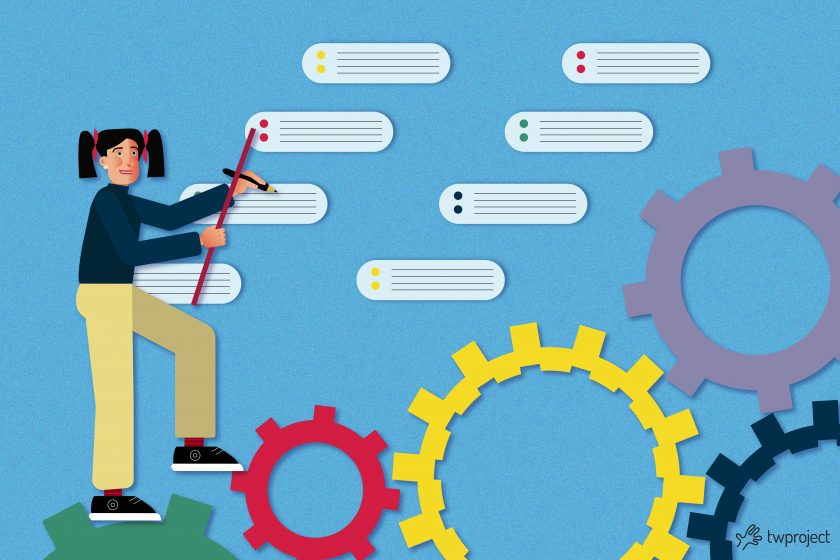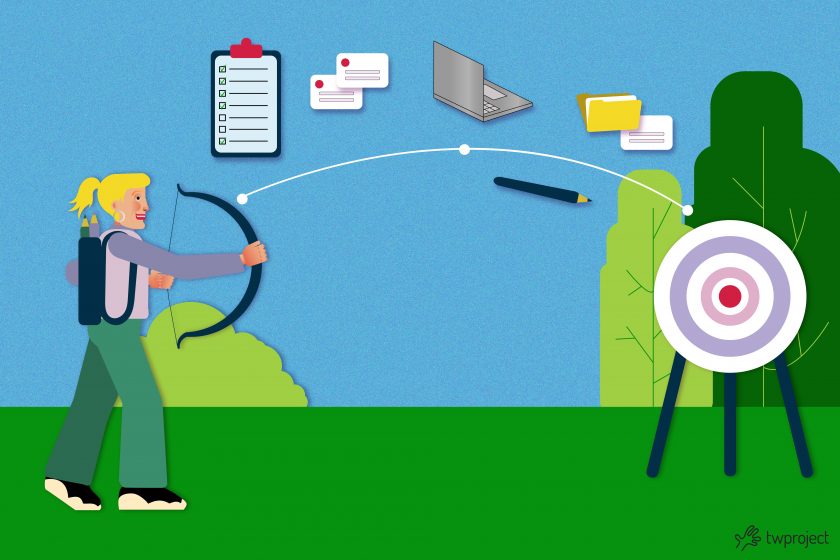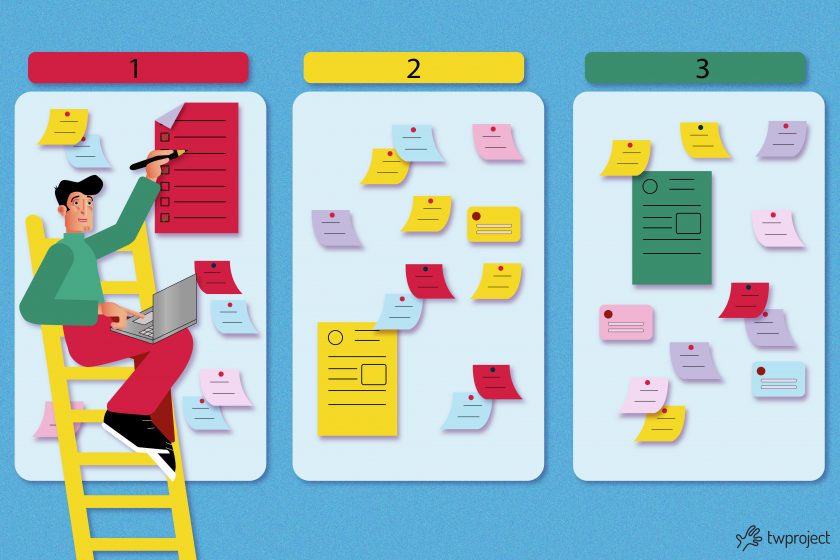-
Analytical skills for successful projects
As a project manager, possessing analytical skills for successful projects is the absolute core of required skills. Analytical thinking can help you explore complex problems, make decisions and find solutions effectively. CONTENT What are analytical skills? The analytical thought process Why are analytical skills important? Analytical skills examples How to improve analytical skills How a … Continue reading "Analytical skills for successful projects"
-
Decision matrix: how to make important decisions in a project
What do you do when you have an important decision to make? Draw up a list of pros and cons? Flip a coin? Do you postpone hoping someone else will end up making the decision for you? CONTENT When should you use a decision matrix (and when not to)? What exactly is a decision matrix? … Continue reading "Decision matrix: how to make important decisions in a project"
-
Project manager and NRRP: key skills
The project manager for NRRP is a central figure for the success of projects related to the National Recovery and Resilience Plan (NRRP). This professional’s skills in planning, coordinating, and monitoring efforts are crucial to ensuring that deadlines and strategic outcomes are met. In this article, we will examine the NRRP and the essential skills … Continue reading "Project manager and NRRP: key skills"
-
Flowchart: what is it and why it is important in a project
Flowchart is very important in project management – perhaps fundamental – because it improves work flow efficiency and makes the project transparent. CONTENT What is a flowchart? Why use a project management process flowchart? How many types of flowcharts are there? How to draw a flowchart How to benefit by using software Lack of transparency … Continue reading "Flowchart: what is it and why it is important in a project"
-
OKR methodology for startups: why it works and how to implement it
The OKR methodology is a framework that has stood the test of time and has proven fit for organizations of all sizes and scopes, including startups. All organizations set goals and engage their workforce based on their objectives. Yet the OKR methodology is beneficial not only for large, digital companies; it can help Startups be … Continue reading "OKR methodology for startups: why it works and how to implement it"
-
The Deming Cycle (PDCA) and the constant improvement of quality
Analizing the quality and trying to improve it, is probably the main purpose behind the continuous improvement of business processes. This philosophy of process improvement comes from a very important person, William Edwards Deming, a statistician, often defined as a philosopher of science. TABLE OF CONTENT What is the Deming Cycle The phases of the … Continue reading "The Deming Cycle (PDCA) and the constant improvement of quality"
-
RACI matrix: what needs to be done and by whom
The RACI matrix is a very important tool that can help in the implementation and proper functioning of a process. This matrix is mainly used to coordinate human resources within a process. TABLE OF CONTENT What does RACI mean? Rules for using a RACI matrix One responsible person Communication with the people consulted Inform informed … Continue reading "RACI matrix: what needs to be done and by whom"
-
Statement of Work (S.O.W.): objectives and project work
A Statement of Work (aka S.O.W.), is one of the most important documents in project management as it outlines everything that must be part of a project. CONTENTS What is a Statement of Work? When is a SOW needed? When should the SOW be drafted? What is included in the Statement of Work? Project management … Continue reading "Statement of Work (S.O.W.): objectives and project work"
-
How to prioritize with the Eisenhower Matrix
In our hectic routine, we often find ourselves overwhelmed with tasks and deadlines, feeling we lack time for everything. A problem that we often experience is poor prioritization. Having many things to do does not mean being productive. Therefore, knowing how to prioritize effectively and focusing on what is really important and urgent is critical. … Continue reading "How to prioritize with the Eisenhower Matrix"
-
Project Sustainability Management: when project management meets sustainability
In today’s day and age, it’s tough to spend a day without hearing or seeing some messages about sustainability, and in this regard, Project Sustainability Management is picking up steam. CONTENT What is Project Sustainability Management? The four aspects of Project Sustainability Management How do we place sustainability at the very core of every project? … Continue reading "Project Sustainability Management: when project management meets sustainability"
-
The project baseline and the measurement of the variables
The project baseline is an “instant photo” of the project taken at its initial moment. The goal of the project baseline is to see how far actual results have deviated from the initial reference plan. TABLE OF CONTENT Project Manager and project baseline Why is the project baseline important? How to check the status of … Continue reading "The project baseline and the measurement of the variables"
-
Swot analysis of a project, how to do it and why
A project SWOT analysis is a strategic planning technique that project managers can use to assess the strengths and weaknesses of their projects. CONTENT What does SWOT mean? What is the purpose of a SWOT analysis? Who should do a SWOT analysis? Advantages of SWOT analysis Examples of SWOT analysis In addition, this analysis will … Continue reading "Swot analysis of a project, how to do it and why"
-
Master plan & master planning
A master plan is a long-term dynamic planning document that provides a conceptual framework to drive project development and growth. Successful project managers are masters at creating comprehensive project plans that define project scope, cost, planning, activities and resources. A Master Plan reflects a vision set in the early stages of a project and aims … Continue reading "Master plan & master planning"
-
Project Management 2024 Events in Italy and the World
Events 2024 in Italy and worldwide focusing on project management offer a wealth of learning and networking opportunities for professionals in this industry. In Italy, the project management sector is growing, thanks in part to the many events that offer professionals and enthusiasts the opportunity to expand their knowledge and skills. INDICE Project Management 2024 … Continue reading "Project Management 2024 Events in Italy and the World"
-
Knowledge Management in Project Management: advanced practices
Knowledge management in project management has become a key mainstay for successful projects. But what is it exactly? It is a systematic process for collecting, organizing, and sharing information and knowledge within an organization. This process helps project managers make informed decisions and improve their teams’ efficiency. INDICE DEI CONTENUTI Benefits of Knowledge Management in … Continue reading "Knowledge Management in Project Management: advanced practices"
Pm expert
Choose the category you are interested in:
AgileComparisonCost managementPm expertProduct updatesProductivityProject managementResource managementTime managementUsage tips















